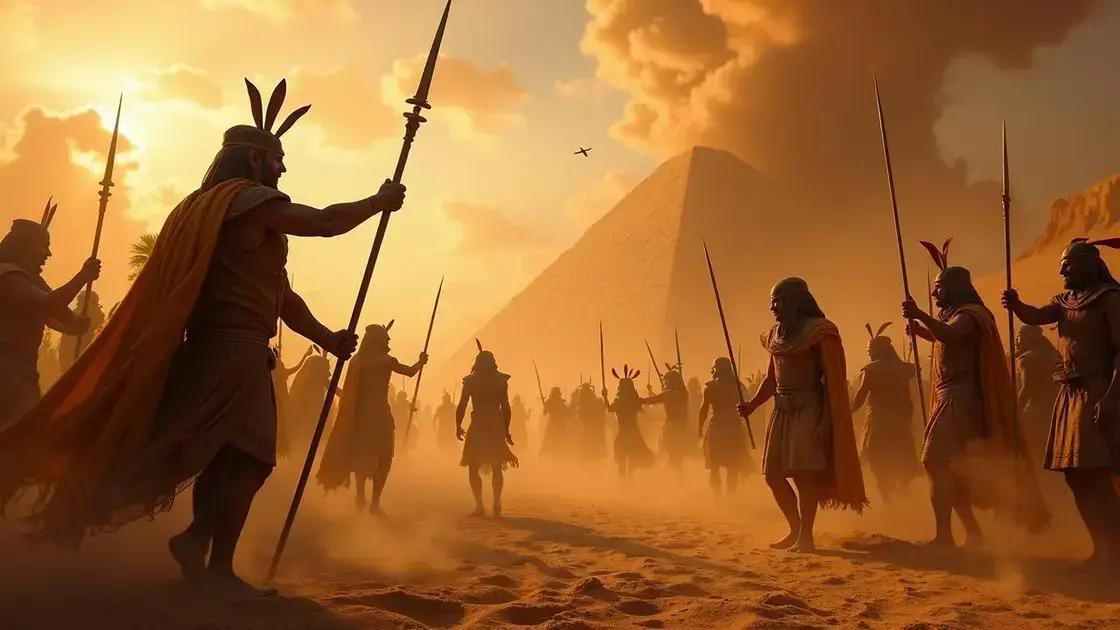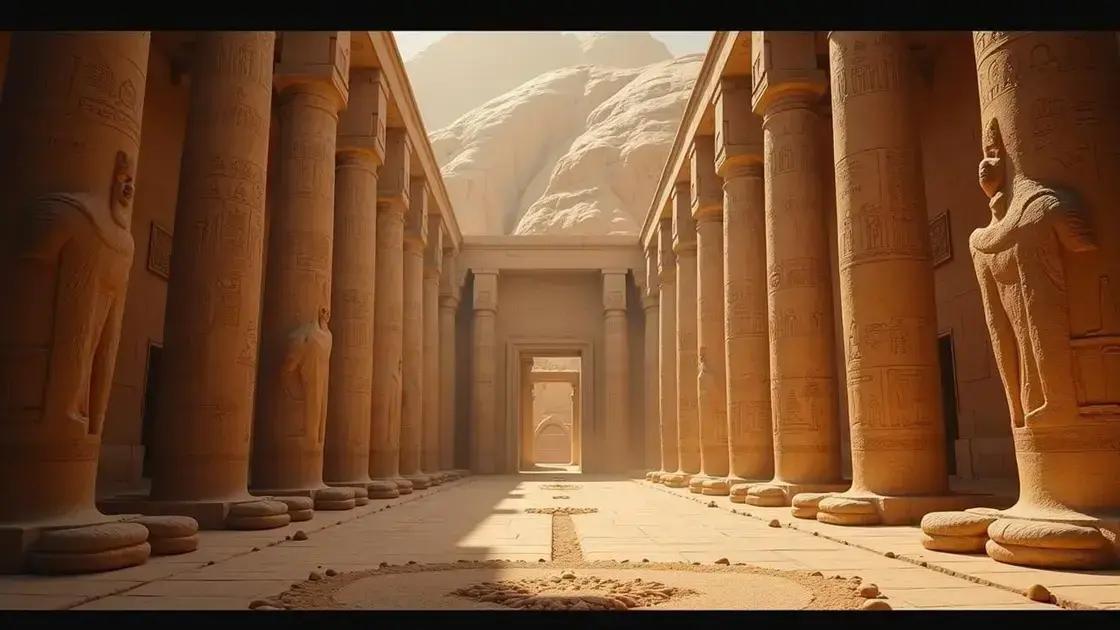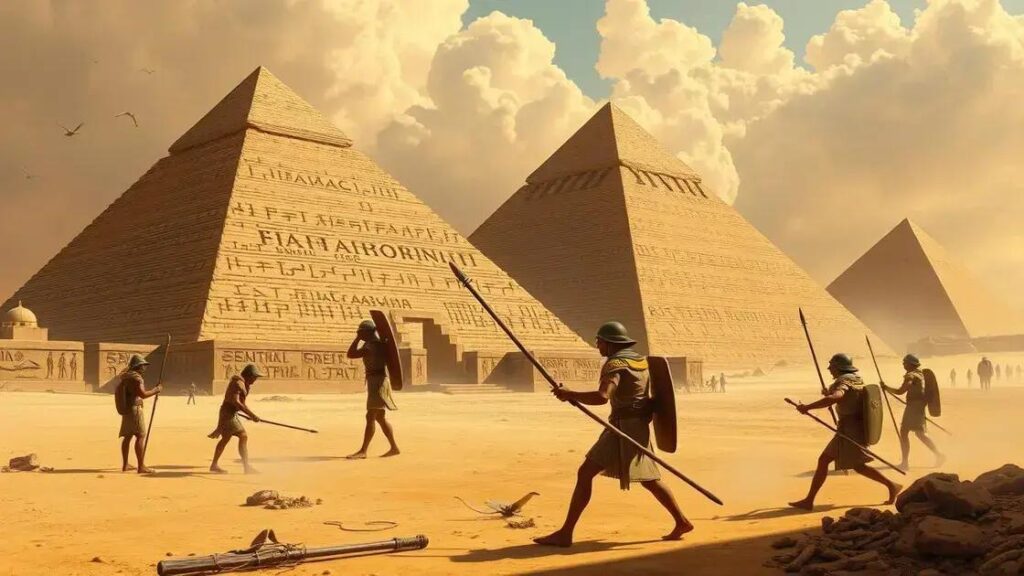Understanding the mechanics behind the Trick of the Egyptians reveals how ancient Egyptians employed strategies such as psychological warfare, terrain manipulation, and misinformation to deceive their enemies, creating lasting influences seen in modern marketing and architectural designs.
Understanding the mechanics behind the Trick of the Egyptians unveils a fascinating glimpse into ancient ingenuity. This age-old technique utilized by the Egyptians reveals their cleverness in engineering and strategy, captivating historians and enthusiasts alike. In this blog post, we will delve into the origins of this trickery, explore how the Egyptians deceived their enemies, and discuss modern interpretations that continue to spark intrigue. Join us on this enlightening journey through history.
The Origins of the Egyptian Trick

The origins of the Egyptian trick date back to the earliest civilizations along the Nile River. Ancient Egyptians were masters of engineering and strategy. They used their knowledge of geometry and physics to build incredible structures, but part of their genius was also in deception.
The Role of Illusion in Egyptian Culture
Illusions played a significant role in their architectural feats. For instance, the way they aligned their pyramids was not only impressive but also created an air of mystery. People wondered how such massive structures could be built with the tools available at the time.
Tricks Against Enemies
The Egyptians employed tricks in warfare, such as using terrain to their advantage or creating smoke screens to confuse their opponents. This helped them gain a tactical upper hand. Their understanding of human psychology also allowed them to manipulate enemies into making mistakes.
Moreover, myths surrounding their gods and divine power added layers to their tricks. By instilling fear or awe, they could control narratives and solidify their dominance both politically and socially.
Incorporation of Symbolism
Symbols played a crucial role in their tricks. The use of hieroglyphs not only communicated messages but also served to perplex those unfamiliar with their language. This created a sense of exclusivity and authority over knowledge, further enhancing their influence over both allies and adversaries.
Understanding these origins provides insight into how the Egyptians used tricks not just for construction or warfare but also as a foundational aspect of their culture, helping them to thrive for centuries.
How Ancient Egyptians Deceived Their Enemies

Ancient Egyptians were known for their strategic prowess in warfare, often using clever tactics to deceive their enemies. One of the main methods they employed involved the clever use of terrain. Familiarity with the landscape allowed them to set traps and ambushes, which caught adversaries off guard. For instance, they would luring foes into valleys and then strike from higher ground.
The Use of Decoys
Decoys also played a vital role in their strategies. Egyptians would sometimes create illusions of strength by positioning dummies or other objects to make their troop numbers appear larger. This psychological tactic could intimidate opponents and lead them to withdraw without a fight.
Utilizing Misinformation
Another tactic was the spread of misinformation. By planting false rumors about their military might or upcoming attacks, the Egyptians could manipulate the decisions of their enemies. This would create confusion and second-guessing among opposing forces.
Incorporating Rituals
Rituals were often used to instill a sense of fear and superstitition within their enemies. The Egyptians believed deeply in their gods, and they often performed ceremonies to invoke divine support. This could lead adversaries to think that fighting against them was futile and cursed, causing hesitation.
The trigger behind these tactics was a profound understanding of human psychology. By exploiting fears and perceptions, Egyptians managed not only to protect their land but also to expand their influence across regions.
Modern Interpretations of Egyptian Trickery

Modern interpretations of Egyptian trickery reflect the continued fascination with the strategies used by this ancient civilization. Today, many scholars and historians study these tactics to understand how they can be applied in contemporary settings. Psychological warfare remains relevant, especially in fields like marketing and politics.
The Use of Psychological Tactics
Modern-day strategies often mimic the psychological tricks employed by the Egyptians. For instance, marketers use fear of loss to encourage consumers to make quick purchasing decisions. This technique echoes how Egyptians would instill fear in their enemies to gain the upper hand.
Illusion in Entertainment
In terms of entertainment, magic shows today draw from ancient Egyptian illusions. Techniques that created awe and wonder in ancient times are still utilized by modern magicians and entertainers. The art of deception captivates audiences through the same principles applied thousands of years ago.
Architectural Inspirations
Architecture today also finds inspiration in the grand designs of ancient Egypt. Structures utilizing optical illusions can be seen in modern architecture, with architects incorporating visual tricks that create grandeur and mystique similar to the pyramids.
Additionally, contemporary military strategies often reference historical tactics, including those used by the Egyptians. The idea of employing surroundings and deception to gain an advantage remains crucial in modern warfare.
Understanding the Timeless Influence of Egyptian Trickery
The exploration of the mechanics behind the trick of the Egyptians reveals a rich history of ingenuity, strategy, and psychological manipulation. From their origins to modern interpretations, the lessons learned from ancient Egyptian tactics continue to resonate today.
Whether in warfare, entertainment, or architectural design, the legacy of their tricks endures through time. As we analyze how they deceived their enemies and captivated their audiences, we gain insight into human psychology and the power of perception.
Ultimately, the timelessness of Egyptian trickery teaches us valuable lessons applicable across various fields, reminding us of the impact that clever tactics can have on shaping outcomes.
FAQ – Frequently Asked Questions about the Mechanics Behind the Trick of the Egyptians
What were the main tactics used by ancient Egyptians to deceive their enemies?
Ancient Egyptians used various tactics such as utilizing terrain for ambushes, employing decoys to create illusions of strength, and spreading misinformation.
How did the ancient Egyptians use psychological warfare?
They instilled fear in their enemies through rituals and the strategic display of military might, manipulating perceptions to gain a tactical advantage.
What are modern interpretations of Egyptian trickery?
Modern interpretations include using psychological tactics in marketing, incorporating illusions in entertainment, and drawing architectural inspiration from ancient designs.
How can the lessons from Egyptian trickery be applied today?
The lessons teach us about the power of perception, strategic planning, and psychological manipulation, which are relevant in fields such as business and military strategy.
Why is understanding Egyptian trickery important?
Understanding this trickery provides insight into both ancient and modern strategies, helping us comprehend the timeless influence of psychological tactics.
What role did illusions play in ancient Egyptian culture?
Illusions were significant in architecture and entertainment, creating awe and contributing to the societal narrative of divine power and skills.












